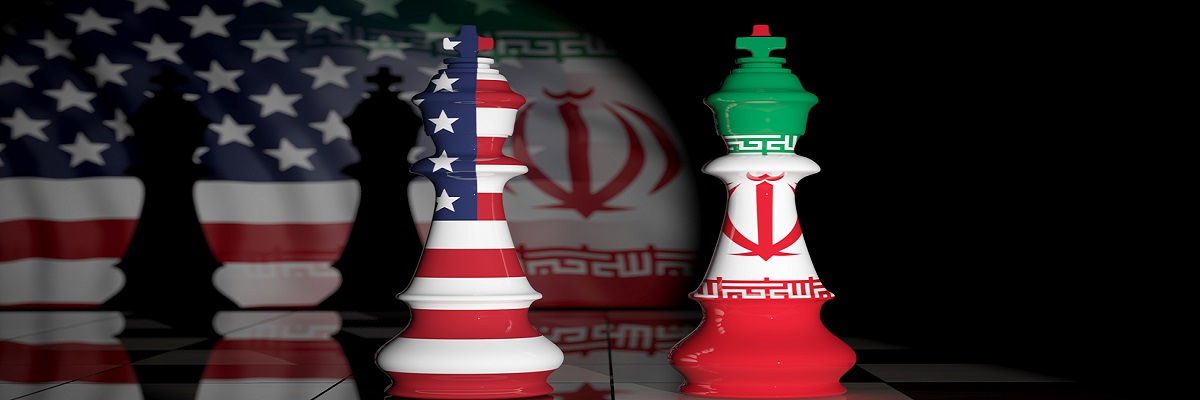Diplomacy
US-Iran conundrum: Not all doors are shut

Image Source : Shutterstock
Subscribe to our weekly newsletters for free
If you want to subscribe to World & New World Newsletter, please enter
your e-mail
Diplomacy

Image Source : Shutterstock
First Published in: Jun.06,2024
Aug.13, 2024
In the wake of the helicopter crash that tragically claimed the lives of President Ebrahim Raisi and Foreign Minister Hossein Amir-Abdollahian, Iran finds itself at a critical juncture, grappling with both internal and external challenges. Foremost among them is its relationship with the US. Iran is in the middle of a tense regional competition with Israel over the latter’s war in Gaza with Hamas. Washington is invariably drawn into what constitutes a historically contested triad shaping stability and instability in broader West Asia. Iran’s leadership crisis may have come at an important time for the US, amid an ongoing political slugfest at home in an election cycle and a litmus test for US relations with Israel. Two factors, however, are likely to dampen any US expectations from Iran. Iran’s topmost leadership remains intact under the aegis of the supreme leader, Ayatollah Ali Khamenei, and the next president will be expected to meet the benchmarks set by previous leaders. For the US, the Iran challenge is likely to remain complex, both due to the leadership transition inside Iran and the growing regional power and influence projected by Tehran. If the Biden administration, despite its initial will, couldn’t bind Iran within the constraints of the Joint Comprehensive Plan of Action (JCPOA), a possible Trump presidency would be even less likely to succeed. Regional anti-American sentiments in West Asia, especially among Iran and its proxy groups, seem further entrenched. However, the Biden administration has an opportunity to mitigate regional hostilities by fostering a Saudi-US détente, which remains on the table but is heavily dependent on how much influence Washington can wield with Israel’s highly conservative cabinet in restraining its behaviour in Gaza. Iran’s regional outlook and relations with the US may not be poised for significant shifts, given the predictability associated with the regime, yet the challenge of nurturing inter-generational leaders looms large for Iran. Leadership succession in Iran’s internal politics has always been meticulously planned and nurtured over the years, undergoing a rigorous process to ensure continuity. Internally, Iran faces a crucial test of its leadership amid a situation it has not encountered in decades. However, there is solace in the fact that Supreme Leader Ayatollah Khamenei remains alive, poised to select the most suitable candidate. Internally, the vacuum left by the untimely demise of two top leaders presents a crisis as well as an opportunity. However, the socio-cultural divergence with the West, exemplified by the Iranian leadership’s lingering reluctance to embrace any change, may continue to strain the relationship. The crisis in leadership compounds this internal struggle, as no state wishes to appear leaderless during times of uncertainty. Externally, the challenges for Iran are manifold, particularly in filling the leadership void that has been growing since the death of General Qasem Soleimani in 2020 after a US-targeted strike. The new leadership in Iran will be tested in how it continues to project its regional influence and maintain the momentum of clandestine efforts it has propagated across its axis. Internationally, the Iranian leadership’s challenge will primarily be in its tussle with the West on the one hand and maintaining poise in its relationships with varied actors such as China, Russia, and India, all while avoiding Western sanctions. Iran, which has been persistently characteristic in its distinct political stance even in the face of sanctions and regional tensions, has found an alternative axis of support, most notably through partnerships with China and Russia. Besides, Iran has fostered a network of regional support through proxy groups such as Hezbollah, Kataib Hezbollah, the Houthis, Hamas, and others. This solidarity axis is now bolstered by a shared commitment to the Palestinian cause. However, the post-October 7, 2023, landscape has seen a nuanced shift in perceptions, including those of regional Arab leaders. As such, the current period is particularly tumultuous in West Asiawith the unabating Israel-Hamas conflict. The loss of key figures in Iran’s leadership couldn’t have come at a worse time, especially as Iran finds itself at a crossroads, balancing unfinished conflicts and shifting regional loyalties. According to the International Atomic Energy Agency, Iran is now enriching uranium to as much as 60% purity and possesses enough of this material that, if further enriched, could be sufficient for two nuclear weapons. Now that the ‘breakout’ time is close to zero, there are strong incentives for keeping Tehran engaged through the IAEA, if not bilaterally. Despite the seeming belligerence of Iran’s leadership, avoiding war and efforts towards regional peace and stability lie at the core of Tehran’s long-term regional vision. Just a week before the fatal crash, Iran’s foreign minister met with the IAEA chief, and Iran engaged with US officials through intermediaries in Oman on how to avoid the risks of a wider regional war. If anything, these efforts show that both the Biden administration and the Iranian leadership are still willing to sit at the table. That may not be bad inspiration for the next generation of leaders in Tehran to pick up from. This commentary originally appeared in Deccan Herald. The views expressed above belong to the author(s).
First published in :

Vivek Mishra is Fellow, Americas with ORF’s Strategic Studies Programme in New Delhi. His research interests include America in the Indian Ocean and Indo-Pacific and Asia-Pacific regions, particularly the role of the US in security in South Asia, Indo-US defence relations, and the Indian defencesector. He also studies security and geopolitical aspects of Indian foreign policy closely. Vivek Mishra is Adjunct Faculty at OP Jindal Global University in Sonipat, Haryana. Vivek Mishra is also a Visiting Faculty at FLAME University and Symbiosis School of International Studies, Symbiosis University Pune & Visiting Faculty, RashtriyaRaksha University, Gandhinagar, Gujrat. Dr. Mishra has served as the Deputy Director (Hony), Kalinga Institute of Indo-Pacific Studies, Bhubaneswar and been a Fulbright-Nehru Doctoral Research Scholar at the Saltzman Institute of War & Peace, School of International Public Affairs, Columbia University. Besides, Vivek Mishra was South Asian Voices Visiting Fellow, Stimson Center, Washington DC and was awarded a pre-doctoral fellowship by the Osmania University Centre for International Programmes to study US-India-China relations in the Indian Ocean. In the past Vivek Mishra has worked as Research Fellow, Indian Council of World Affairs, New Delhi – a think-tank of the Ministry of External Affairs, India; Assistant Professor, Netaji Institute for Asian Studies, Kolkata;, Research Associate, Indicia Research and Advisory, New Delhi; Research Fellow, Centre for Joint Warfare Studies, Integrated Defence Staff, Ministry of Defence and in Institute of Peace and Conflict Studies, New Delhi. Vivek Mishra has published one single authored; two co-authored books and one co-edited volume. Vivek Mishra has over 15 peer-reviewed journal articles, and 14 book chapters. Dr. Mishra’s articles have appeared in The Hindu, The Indian Express, Deccan Herald, The Telegraph, The Pioneer, The Diplomat, The National Interest and Huffington Post.
Unlock articles by signing up or logging in.
Become a member for unrestricted reading!